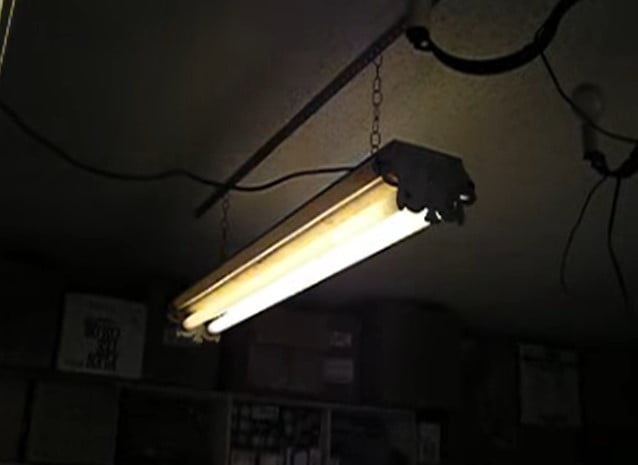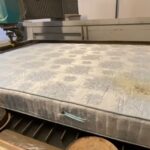Wondering just what to do about your old fluorescent tubes? We hear you. Older fluorescent lamps may contain nearly 50 milligrams of mercury per 4-foot-long fluorescent lamp. Lamps manufactured after 1994 contain less mercury. Mercury is a potent neurotoxin that can damage the brain and nervous system at very low levels.
Fluorescent tubes have the advantage of benefitting from much greater energy efficiency than incandescent lamps. They are a relatively inexpensive form of lighting and have a rather long life. Fluorescent tubes are used for a wide range of domestic and commercial applications.
However, when it comes to getting rid of them, it is no surprise that old and used fluorescent tubes should be recycled and, therefore, appropriately discarded. Keep reading and find out what to do with old fluorescent tubes.
What To Do With Old Fluorescent Tubes FAQs
What is a Fluorescent Tube?
The fluorescent tube, also referred to as the fluorescent strip or tube light, is a low-pressure mercury-vapor gas-discharge tube that converts fluorescence into visible light. This process involves triggering mercury vapor via an electric charge, resulting in the appearance of a short-wave ultraviolet light. This then causes the phosphor coating inside the tube to glow.
Why use fluorescent tubes?
Fluorescent lamps and tubes are an energy-efficient alternative to incandescent lamps for the following reasons:
- Three to four times more energy-efficient.
- Cost less to use.
- Reduce greenhouse gas emissions and other pollution from energy production.
- Last up to ten times longer than standard incandescent light bulbs.
What are the types of fluorescent tubes?
T2 Fluorescent Tubes
The bulbs featured within these miniature tubes have a diameter of 7mm (0.275 inches). They allow for quick connection and feature an axial base suitable for applications, including the lighting of display cases, under cabinets, and display backlights.
T4 Fluorescent Tubes
T4 fluorescent tubes have a particularly slim-fitting design, and the small size of these fluorescent tubes allows for easy installation.
T5 Fluorescent Tubes
T5 fluorescent tubes are suitable for lighting offices, schools, supermarkets, and similar environments. They are an excellent cost-saving option, particularly given their expected lifespan of up to 30,000 hours.
T8 Fluorescent Tubes
These fluorescent tubes are used for a wide range of domestic and commercial purposes, primarily because of the high light emission levels.
T12 Fluorescent Tubes
These tubes have measurements of 38mm (1.49 inches) in diameter and have different wattages compared with alternative fluorescent tubing types.
Circular Fluorescent Tubes
Lighting designers commonly use circular fluorescent tubes to create well-lit interior spaces.
What is the brightest fluorescent tube?
T8 fluorescent tubing is the ideal option if you want to see a good level of detail. The high levels of color rendering allow property areas and items to be shown to full effect. These tubes have a life expectancy of up to 15,000 and require a relatively low level of maintenance.
How to choose a fluorescent tube?
- Types of fluorescent tube
- The wattage of fluorescent tube
- Lenght of fluorescent tube
- Applications of fluorescent tube
Can you put fluorescent tubes in the bin?
Fluorescent lights must go to your Recycling Centre as they are hazardous – please do not put them in your bin at home. Old-style incandescent or Tungsten light bulbs cannot be recycled, so please put them in your refuse bin.
Why are fluorescent tubes hazardous?
Fluorescent tubes can be very harmful to the environment, wildlife, and even humans. Any variety of fluorescent lighting contains mercury, a highly toxic metal. If incorrectly disposed of, mercury can dissipate into the atmosphere, which allows it to contaminate water supplies and wildlife.
What do you do with dead light bulbs?
Incandescent bulbs and lamps can be tossed into the trash. If a bulb is broken, wrap it first in paper or plastic before placing it in your trash bin. This prevents broken edges from cutting through your garbage bag and creating a mess, and it helps protect you and your waste hauler from accidental injury.
What is the white powder in a fluorescent tube?
The white powder you see inside a fluorescent light bulb is called phosphor, a substance that emits visible light whenever it absorbs ultraviolet energy waves. The phosphor used in a fluorescent light bulb is what determines both the color temperature and the color rendering index.
What does mercury hazard mean?
- Fluorescent bulbs, high-intensity discharge (HID) lamps, and neon light bulbs contain small amounts of highly toxic mercury, classified as hazardous waste under the Resource Conservation and Recovery Act (RCRA).
- All mercury-containing light bulbs should be disposed of regularly and in a legal manner to avoid the effects of mercury emissions on the environment.
- One of the main hazards of mercury exposure is its tendency to build up in the atmosphere. This buildup eventually falls as rain and snow, polluting land and surface water. This is why proper mercury light bulb disposal is so important.
- It can also accumulate in animal tissue in a process called ‘bioaccumulation.’ You have probably heard about this phenomenon affecting fish in surface lakes and ponds, as mercury accumulation renders their consumption dangerous.
How should fluorescent tubes be disposed of?
- Fluorescent lamps are energy-saving and do not belong in the rubbish bin. Every fluorescent tube carries an end-of-life recycling fee, and you can find your local recycling point.
- They contain small amounts of mercury. Although this is entirely safe for users of the lamps, they must be collected separately for disposal.
- It ensures that valuable parts of the lamps, such as glass and metal, are not lost. The LAMP company is not listed as a general waste site, but they can typically take back clients end life lamps at no charge.
Can I recycle fluorescent bulbs at Lowe’s?
Keep in mind Lowe’s stores offer a recycling center that accepts plastic bags, CFL bulbs, rechargeable batteries, and cellphones. Bring your items in follow instructions at the recycling center, garden center, and Lowe’s.
Does Lowe’s or Home Depot recycle fluorescent tubes?
The biggest market for CFL recycling is retailers (like Home Depot and Lowe’s), which accept them free but only from consumers. CFLs are more widely purchased in these retail stores, whereas fluorescent tubes are more often used in offices.
Can fluorescent tubes be reused?
Other materials in the bulbs get reused. Recycling CFLs and other fluorescent bulbs allow the reuse of the glass, metals, and other materials that make up fluorescent lights. Virtually all components of a fluorescent bulb can be recycled.
How do you store fluorescent tubes?
Safely store extra fluorescent bulbs in jumbo-sized vinyl-clad storage hooks in a handy location near your fixture in the shop, garage, or basement. Safely store extra fluorescent bulbs in jumbo-sized vinyl-clad storage hooks in a handy location near your fixture in the shop, garage, or basement.
What To Do With Old Fluorescent Tubes
Managing and Recycling CFLs
- Under the Environmental Protection Agency’s (EPA) Universal Waste Rule, many mercury-containing light bulbs can be treated as non-hazardous waste, if properly recycled.
- The EPA-recommended method for the safe disposal of all types of fluorescent light bulbs is actually recycling. But it is a good idea to take a few assessments about your type of business and your location’s local and state regulations before you begin to decide how to manage your old, broken, or unused fluorescent lights.
- Depending on how many CFLs you have in your facility, the easiest method of recycling may vary.
- If you only have a few fluorescent light bulbs needing recycling, you may be able to take advantage of your local county’s household hazardous waste (HHW) drop-off-site.
- If you have hundreds of CFL bulbs, you will most likely need the pick-up services of a professional hazardous waste recycler, whereby you can schedule the recycler to collect bulk pick-ups of fluorescent bulbs.
Broken Fluorescent Bulbs
Broken CFLs can also pose an immediate threat to workplace safety. The EPA has laid out specific guidelines for the cleanup of these broken bulbs.
- Open a window or otherwise air the room out for 10 to 15 minutes
- Shut off your HVAC system, if applicable
- Scoop up all shards of glass, powder, and metal filaments using a stiff piece of cardboard
- Vacuum up any remaining dust or powder
- Place all cleanup materials, including any used vacuum cleaner bags, in a sealable container or trash bag, and leave outside until the debris and materials can be disposed of
- Contact a local recycling company or take all materials to a community drop-off location to dispose of the broken bulbs.
What To Do With Old Fluorescent Tubes -Additional Tips
Now you know what to do with those old fluorescent tubes, let’s get inside a cool project, check how you can renovate your big girl’s bathroom from our teenage girl bathroom ideas.



